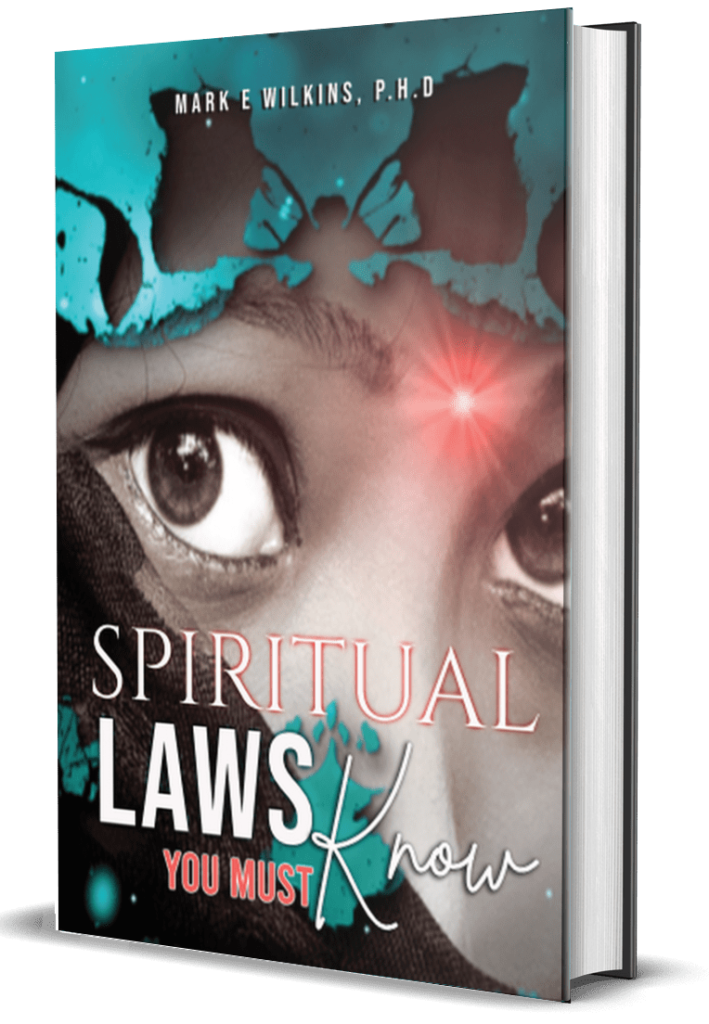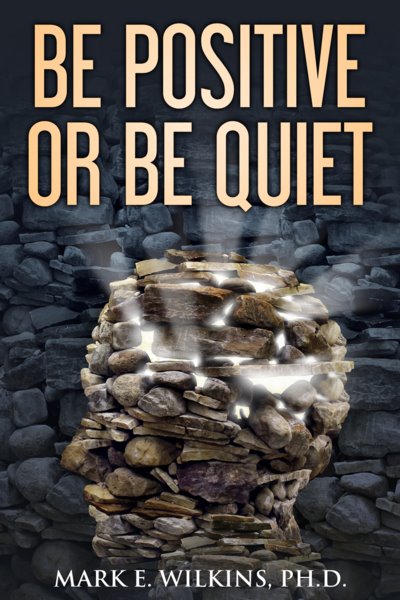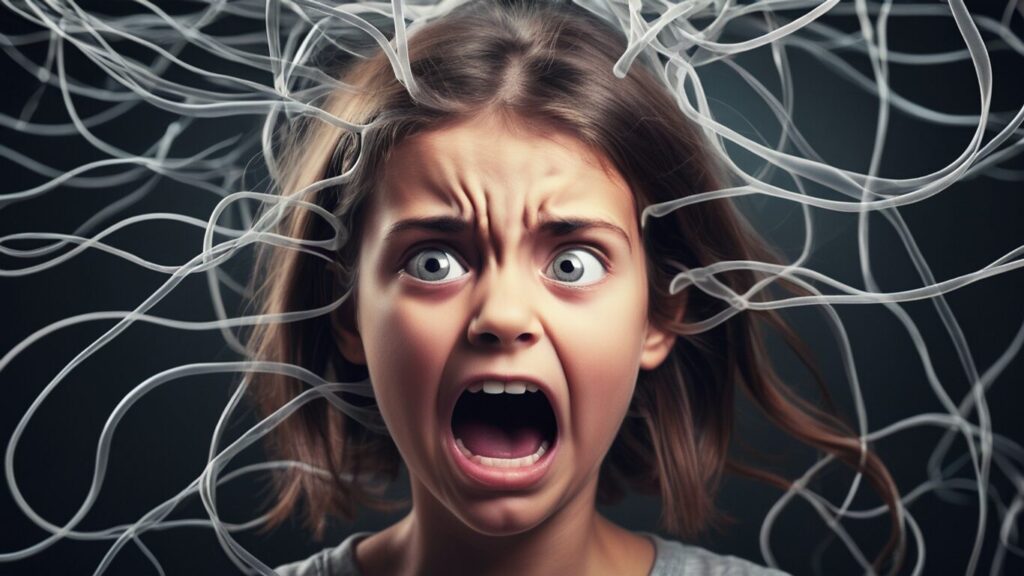
What Creates Our Fear And Phobias In The Mind
Fear and phobias in your mind are often triggered by a combination of biological factors, psychological influences, and environmental cues. Your amygdala plays a pivotal role in orchestrating fear responses, while past traumatic experiences and learned behaviors can intensify these reactions. Remember, fears and phobias are learned process and innate.
Environmental stressors and societal norms can also shape your fears. Understanding the complexity behind these mechanisms can shed light on how fears develop. It’s important to acknowledge these factors to effectively manage and overcome your fears. By exploring the interplay of these elements, you can gain insight into the root causes of your fears and phobias.

Key Takeaways
- Imbalances in neurotransmitters disrupt fear processing.
- Genetic factors influence susceptibility to phobias.
- Past traumatic experiences can trigger fear responses.
- Learned responses intensify fear reactions.
- Exposure to specific stimuli creates lasting fear associations.
The Brain’s Role in Fear
The amygdala, nestled deep within your brain, orchestrates the intricate dance of fear responses, triggering a cascade of stress hormones to prepare your body for action. This almond-shaped structure is an essential player in the domain of fear, playing a central role in processing and regulating emotions tied to fear and phobias. Neural circuits connecting the amygdala to other brain regions, such as the prefrontal cortex, form a complex network responsible for modulating fear responses. When these circuits malfunction, it can lead to the development and persistence of phobias, where individuals experience exaggerated and irrational fears towards specific objects or situations.
Within the brain, neurotransmitters like serotonin and GABA play important roles in modulating fear and anxiety responses. Imbalances in these neurotransmitters can disrupt the delicate equilibrium necessary for healthy fear processing, potentially contributing to the development of phobias. Additionally, fear conditioning and memory formation in the amygdala are essential processes for understanding how phobias manifest in the brain. By encoding fear-inducing stimuli and associating them with negative outcomes, the amygdala can perpetuate irrational fears and trigger exaggerated responses to perceived threats.
Understanding the intricate workings of the amygdala and its interconnected neural circuits sheds light on the biological underpinnings of fear and phobias. By delving into these mechanisms, researchers and healthcare professionals can develop targeted interventions to help individuals overcome debilitating phobias and regain control over their lives.
Biological Factors in Fear
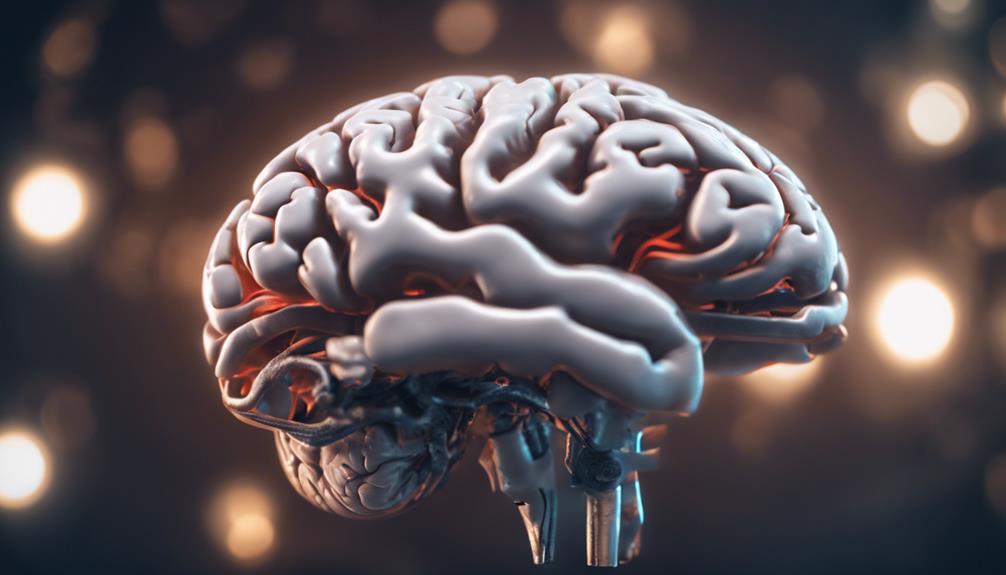
Exploring the biological underpinnings of fear reveals intricate mechanisms involving key brain structures and neurotransmitter systems that regulate fear responses. The amygdala, a critical brain structure, serves as a hub for processing fear signals. It plays a central role in recognizing potential threats, triggering the release of stress hormones, and coordinating subsequent fear responses. Additionally, neurotransmitters such as serotonin and GABA are intricately involved in modulating fear and anxiety levels within the brain.
Genetic factors also play a significant role in influencing an individual’s susceptibility to developing phobias and fear responses. Variations in genes can impact how fear circuits and neurotransmitter systems function, potentially predisposing individuals to heightened fear responses or the development of phobic disorders. Dysfunctions within these fear circuits and neurotransmitter systems can contribute to the formation and perpetuation of phobias, amplifying the individual’s fear response to specific stimuli.
Moreover, fear conditioning, a process where an individual learns to associate a neutral stimulus with a fearful experience, can lead to long-lasting changes in the brain, particularly within the amygdala. Stress-induced alterations in the amygdala can further exacerbate these changes, solidifying the connection between specific triggers and fear responses. Understanding these biological factors can provide valuable insights into the mechanisms underlying fear and phobias, paving the way for more targeted treatments and interventions.
Psychological Triggers of Fear
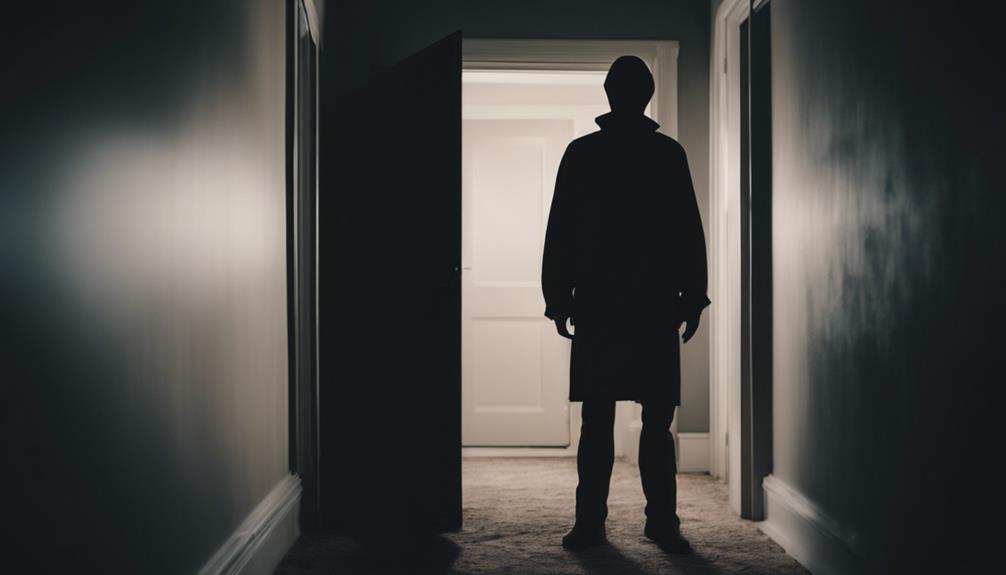
Investigating the intricate interplay of past experiences and learned responses reveals the pivotal psychological triggers that underlie the development of fear and phobias in individuals. These triggers can have a significant impact on how fear manifests and intensifies within the mind.
Key Points:
- Past Traumatic Experiences: Traumatic events from the past can serve as potent psychological triggers for fear. Whether it’s a childhood incident or a distressing occurrence in adulthood, these experiences can linger in the mind and resurface when faced with similar situations, amplifying fear responses.
- Learned Responses: Through repeated exposure to fear-inducing stimuli or situations, individuals can develop learned responses that heighten their fear reactions. These learned behaviors become ingrained in the mind, shaping how individuals perceive and react to potential threats.
- Genetic Factors: Genetic predispositions can also influence the development of fear responses and phobias. Certain genetic markers may make individuals more susceptible to experiencing heightened fear responses or developing specific phobias based on familial patterns.
Understanding these psychological triggers is crucial in unraveling the complexities of fear and phobias. By acknowledging the impact of past experiences, learned behaviors, and genetic predispositions, individuals can work towards managing and overcoming their overwhelming fears effectively.
Environmental Influences on Fear

Experiencing traumatic events or conditioning from past experiences can greatly influence the development of fear responses in individuals. Environmental influences play a significant role in shaping our fears and phobias. Exposure to specific stimuli or situations can create lasting associations that trigger fear responses. For instance, if someone experienced a dog attack as a child, they may develop a specific phobia of dogs. Cultural beliefs and societal norms also contribute to the formation of fears. Certain cultures may instill fear of supernatural entities or specific animals through stories or traditions, influencing individuals’ fear responses.
Learned behaviors from family members or peers can further cement these fears. If a parent reacts fearfully to spiders, a child may mirror that behavior and develop arachnophobia. Additionally, environmental stressors like violence or instability can heighten susceptibility to developing fear responses. Growing up in a neighborhood plagued by crime may instill a constant state of fear in individuals, impacting their overall fear response.
Understanding how environmental influences shape our fears is important in addressing and managing phobias. By recognizing the factors contributing to our fears, we can work towards overcoming them and regaining control over our fear responses. It’s essential to seek support and guidance when fear becomes overwhelming, as overcoming phobias often requires professional intervention and support systems.
Understanding Phobias

Understanding phobias involves delving into the intricate web of intense and irrational fears that can greatly impact daily life and mental well-being. Phobias aren’t just simple fears; they’re exaggerated and sometimes irrational responses to specific objects or situations that can lead to significant distress. Here are three key points to contemplate when exploring phobias:
- Irrational Fears: Phobias are characterized by intense and irrational fears that go beyond what’s considered a normal fear response. These fears can be debilitating, causing individuals to alter their behaviors significantly to avoid triggering situations or objects.
- Avoidance Behaviors: Individuals with phobias often engage in avoidance behaviors to steer clear of their feared stimuli. This avoidance can interfere with daily activities, relationships, and overall quality of life, leading to isolation and distress.
- Treatment: It’s essential to seek help for phobias as they fall under the umbrella of anxiety disorders. Various treatment options, including therapy and medication, can help individuals manage and overcome their phobias, leading to improved mental health and well-being. Seeking professional guidance can provide the necessary tools to confront and address these overwhelming fears effectively.
Genetic Predispositions to Phobias

Phobias, often rooted in genetic predispositions, can manifest through a complex interplay of inherited factors influencing individuals’ fear responses. Genetic factors play an important role in the development of phobias, with research indicating a familial tendency for specific phobias. Studies suggest that certain genes associated with anxiety and fear responses may contribute to the onset of phobias. For instance, identical twins exhibit a higher likelihood of sharing phobias compared to fraternal twins, pointing towards a genetic influence on phobia development.
Understanding these genetic predispositions is essential as it can help tailor treatment approaches for individuals struggling with phobias. By recognizing the genetic underpinnings of phobias, healthcare professionals can customize interventions that target the specific mechanisms involved in the development and maintenance of these anxiety disorders. This personalized approach to treatment may encompass a combination of cognitive-behavioral therapy, exposure therapy, and medication, among other strategies, to address the genetic factors contributing to phobia development effectively.
Learned Behaviors and Phobias

Learned behaviors play a significant role in the development of phobias, shaping individuals’ responses to specific objects or situations based on past experiences and associations. When negative emotions become linked to particular stimuli, they can manifest as intense fears that characterize phobias. These learned behaviors can lead to conditioned responses, where the individual reacts automatically and fearfully when encountering the phobia trigger. This learned association between the fear-inducing stimulus and the negative emotions cements the phobia further, reinforcing the individual’s avoidance behaviors.
- Learned Behaviors: Individuals can develop phobias through learned behaviors, where past experiences contribute to the formation of intense fears.
- Negative Emotions: Associating negative emotions with specific objects or situations can heighten the fear response, potentially leading to the development of phobias.
- Conditioned Responses: Over time, individuals may develop conditioned responses to fear-inducing stimuli, solidifying their phobic reactions and avoidance behaviors.
Understanding the impact of learned behaviors is essential in addressing and treating phobias effectively. By unraveling the underlying associations and experiences that have contributed to the phobia’s development, individuals can work towards overcoming their fears and reclaiming control over their responses to triggering stimuli.
Overcoming Fear and Phobias

To effectively conquer your fears and phobias, engaging in exposure therapy can be a transformative step towards overcoming them. Exposure therapy involves facing your fears gradually in a controlled setting, allowing you to desensitize yourself to the anxiety-provoking stimulus. By repeatedly exposing yourself to what you fear in a safe environment, you can learn to manage your reactions and reduce the intensity of your phobia over time.
In addition to exposure therapy, cognitive-behavioral therapy (CBT) can be highly beneficial in helping you change the negative thought patterns and behaviors associated with your fears. CBT focuses on identifying and challenging irrational beliefs, teaching coping mechanisms, and developing new strategies to confront your fears more effectively.
Furthermore, incorporating relaxation techniques such as deep breathing exercises and mindfulness practices can help alleviate the anxiety and stress that often accompany fears and phobias. These techniques can be valuable tools in managing your emotional responses and promoting a sense of calmness when faced with triggering situations.

For some individuals, medications prescribed by healthcare providers may also play a role in managing the symptoms of fear and phobias, particularly in cases where the anxiety is severe and significantly impacts daily functioning. Additionally, participating in support groups can provide a sense of community and understanding, offering a platform to share experiences, gain insights, and learn coping strategies from others who are facing similar challenges in overcoming their fears and phobias.
Seeking Professional Help

Professional assistance for managing fear and phobias can be found through therapists, mental health clinics, and support groups. When facing overwhelming fears or phobias, seeking professional help is an important step towards understanding and overcoming these challenges effectively. Here are three key points to keep in mind when seeking professional help for your fear or phobia:
- Access to Mental Health Services: Therapists specializing in anxiety disorders and phobias can provide tailored treatment plans to address your specific fears. Mental health clinics offer a range of services, including diagnostic assessments, therapy sessions, and medication management for individuals dealing with debilitating phobias.
- Importance of Professional Help: Consulting a mental health professional is vital for receiving a proper diagnosis and personalized treatment plan for your fear or phobia. These professionals have the expertise to guide you through evidence-based therapies like cognitive-behavioral therapy (CBT) and exposure therapy, proven to be effective in managing and reducing phobic responses.
- Therapeutic Support and Guidance: Support groups can offer a sense of community and understanding, connecting you with individuals who share similar experiences with fear and phobias. These groups provide a supportive environment for discussing challenges, sharing coping strategies, and receiving encouragement on your journey towards overcoming your fears.
Take the Next Step
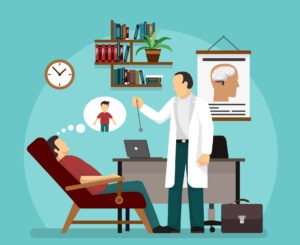 Do not be afraid to reach out to me, Mark E Wilkins, to assist you in any issues you might have. Most Hypnotherapy sessions last 2 hours and EFT Sessions are usually handled with one session. Life Coaching is 45 minute session, once a week. Self-Hypnosis is taught in one session, and lasts a lifetime.
Do not be afraid to reach out to me, Mark E Wilkins, to assist you in any issues you might have. Most Hypnotherapy sessions last 2 hours and EFT Sessions are usually handled with one session. Life Coaching is 45 minute session, once a week. Self-Hypnosis is taught in one session, and lasts a lifetime.
To make an appointment, first listen to the Pre-talk and fill out the Complementary Healthcare Provider Disclosure. The use the Contact Form to request an appointment with the Bohol Hypnosis Expert.
Self-help downloads are available. The self-hypnosis program to teach you how to self-hypnotize is here.
Managing Fear in Daily Life

Gradually facing your fears in daily life can help reduce discomfort and anxiety, leading to a sense of empowerment and increased self-confidence. When managing fears, it’s important to recognize how they manifest in your daily routine. Fear can trigger physical symptoms such as increased heart rate, sweating, trembling, or even digestive issues. Understanding these physical cues can help you identify when fear arises and take steps to address it proactively.
Emotional reactions play a vital role in managing fears. It’s essential to acknowledge your emotions and not dismiss them. By accepting and understanding your emotional responses to fear, you can work towards regulating them effectively. Seeking professional help for managing fears can provide you with valuable coping strategies tailored to your specific needs. Therapists can assist in addressing the root causes of your fears and guide you through techniques to overcome them.
Behavioral effects of fear can impact your daily life significantly. Avoidance behaviors may temporarily alleviate fear but can reinforce it in the long run. Engaging in activities that promote relaxation and calmness, such as mindfulness or deep breathing exercises, can help manage fear levels effectively. Balancing fight-or-flight responses with relaxation techniques is essential for ideal mental health in your daily life.
Frequently Asked Questions About Fears and Phobias
What Triggers Fear in the Mind?
When fear strikes the mind, it’s often triggered by various factors like past experiences or genetic predispositions. The amygdala, a key player in this process, releases stress hormones, preparing you for fight-or-flight responses.
Phobias, in contrast, stem from exaggerated and irrational fears linked to specific objects or situations. Recognizing these distinctions is important in distinguishing between normal fears and phobias. Seek help if these overwhelming fears start interfering with daily life.
What Causes Fears and Phobias?
Understanding the causes of fears and phobias is essential. Biological, psychological, and environmental factors create a complex interplay leading to these overwhelming emotions.
The amygdala triggers the fear response, releasing stress hormones for fight-or-flight reactions. Phobias, however, involve exaggerated and irrational fears often rooted in past experiences, genetics, or learned behaviors.
Recognizing the difference between normal fear responses and phobias is vital for seeking help to manage and overcome these overwhelming fears.
How Is Fear Created in the Brain?
Fear is created in your brain through a complex interplay of biological, psychological, and environmental factors. The amygdala triggers the fear response by releasing stress hormones and preparing your body for fight-or-flight reactions.
Phobias, meanwhile, involve an exaggerated and irrational fear of specific objects or situations that can stem from past experiences, genetics, or learned behaviors. It’s important to recognize the difference between normal fear responses and phobias and seek help if needed to manage and overcome overwhelming fears.
What Part of the Brain Controls Fear and Phobias?
Do you wonder which part of your brain controls fear and phobias?
The amygdala, located in your brain’s temporal lobe, is the primary player in processing fear and emotional responses. When triggered, it releases stress hormones, preparing your body for fight-or-flight reactions.
If fear starts interfering with your daily life, it can develop into a phobia. Recognizing this difference is important and seeking help to manage overwhelming fears is essential.
Conclusion
As you journey through the labyrinth of your mind, remember that fear is but a shadow cast by the light of your courage. Embrace the unknown, confront your fears, and watch as they dissolve like mist in the morning sun.
Just as the butterfly emerges from its cocoon, so too can you break free from the chains of phobias and soar towards a life of freedom and empowerment. Fear may linger, but your strength will always prevail.


